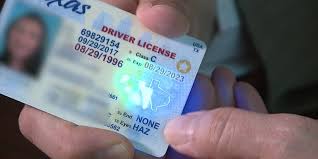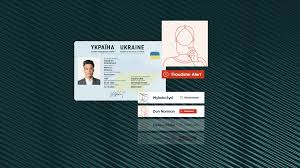does ohio have an enhanced driver's license
Traveling has become an integral part of our modern lifestyle, and with ever-evolving security requirements, it's essential to stay informed about the documents necessary for smooth transit. One such document that has gained attention in recent years is the Enhanced Driver's License (EDL). But as a resident of Ohio, you might wonder, "Does Ohio have an Enhanced Driver's License?" Before diving into that question, let's first explore what an Enhanced Driver's License is and why it might be relevant to you.
What Is an Enhanced Driver's License (EDL)?
An Enhanced Driver's License (EDL) is a special kind of driver's license that functions both as a driver's license and a travel document. This type of license is particularly beneficial for U.S. citizens who frequently travel to neighboring countries such as Canada and Mexico. The EDL serves as a low-cost, convenient alternative to a passport when crossing these borders by land or sea, though not by air.
The EDL is embedded with a Radio Frequency Identification (RFID) chip that can be scanned at the border, along with a Machine-Readable Zone (MRZ) that helps verify the holder's identity. This makes border crossings smoother and more efficient, reducing wait times and minimizing the need for multiple travel documents.
The Importance of an EDL
Given its dual functionality, the EDL is especially attractive to frequent travelers who want to simplify their travel preparations. Instead of carrying both a driver's license and a passport, individuals with an EDL can enjoy the convenience of a single document for identification and border crossings.
Moreover, the EDL is accepted under the Western Hemisphere Travel Initiative (WHTI), which was implemented by the U.S. Department of Homeland Security to enhance border security while facilitating legitimate travel. This initiative applies to U.S. citizens entering the United States from Canada, Mexico, the Caribbean, and Bermuda. Therefore, an EDL can be an excellent option for anyone residing in a border state or traveling frequently within the Western Hemisphere.
Does Ohio Offer an Enhanced Driver's License?
Despite the clear advantages of an Enhanced Driver's License, Ohio does not currently offer this option to its residents. As of the latest updates, only a few states, including Michigan, New York, Vermont, and Washington, provide EDLs. These states have embraced the EDL due to their proximity to international borders, particularly with Canada.
Ohio, on the other hand, has not adopted the EDL program, likely because it does not share a direct land border with another country. Instead, Ohio residents are encouraged to obtain a Real ID-compliant driver's license, which also fulfills federal identification requirements but does not offer the same travel benefits as an EDL.
Understanding the Real ID Act
Although Ohio does not offer Enhanced Driver's Licenses, the state has implemented the Real ID Act, which was passed by Congress in 2005. This federal law sets standards for the issuance of identification documents, including driver's licenses, to enhance national security.
The Real ID Act requires states to verify the identity of applicants more rigorously, ensuring that all driver's licenses and identification cards meet the standards necessary for accessing federal facilities, boarding commercial flights, and entering nuclear power plants. After May 7, 2025, only Real ID-compliant licenses or other federally approved identification will be accepted for these purposes.
What Is the Difference Between an EDL and a Real ID?
While both the EDL and Real ID enhance security and identification, they serve different purposes and are not interchangeable.
Enhanced Driver's License (EDL): As mentioned earlier, the EDL acts as both a driver's license and a border-crossing document, specifically designed for land and sea travel within the Western Hemisphere. It includes additional features like RFID and MRZ for easy scanning at borders.
Real ID: A Real ID-compliant driver's license meets the minimum security standards set by the federal government for identification. It is not intended for international travel but is required for domestic air travel and entry into federal buildings after the enforcement deadline.
What Are Ohio's Alternatives to an EDL?
Although Ohio residents do not have access to an Enhanced Driver's License, there are several alternatives to consider for travel and identification purposes.
U.S. Passport or Passport Card: For international travel, Ohio residents can use a U.S. passport or passport card. The passport card, like the EDL, is suitable for land and sea travel to Canada, Mexico, the Caribbean, and Bermuda. It is more expensive than an EDL but offers broader acceptance.
NEXUS Card: Ohio residents who frequently travel to Canada might consider applying for a NEXUS card. This trusted traveler program, managed by U.S. Customs and Border Protection (CBP) and the Canada Border Services Agency (CBSA), expedites border crossings for pre-approved, low-risk travelers.
Real ID: For domestic travel and accessing federal facilities, the Real ID-compliant driver's license is an essential document. Ohio residents should ensure they have a Real ID by the 2025 deadline to avoid any disruptions in their travel plans.
How to Obtain a Real ID in Ohio
Given the importance of the Real ID for Ohio residents, it's crucial to understand how to obtain one. The process is relatively straightforward, but it does require gathering specific documents to prove your identity, Social Security number, and residency.
To get a Real ID in Ohio, you will need to visit a Bureau of Motor Vehicles (BMV) location in person. Here’s a step-by-step guide to help you through the process:
Prepare Your Documents: You will need to provide documents that verify your identity, Social Security number, and Ohio residency. These can include a U.S. passport or birth certificate, Social Security card or W-2 form, and two documents proving your Ohio residency, such as utility bills or bank statements.
Visit the BMV: Once you have your documents ready, visit a local BMV office. It's a good idea to check the BMV's website beforehand to see if an appointment is necessary and to confirm the required documents.
Complete the Application: At the BMV, you will complete an application for a Real ID-compliant driver's license. You may need to take a new photograph, so be prepared for that as well.
Pay the Fee: There is a fee for obtaining a Real ID, which varies depending on whether you are renewing an existing license or obtaining a new one. Be sure to bring the necessary payment method with you.
Receive Your Real ID: After submitting your application and documents, you will receive your Real ID in the mail within a few weeks. In the meantime, you will be given a temporary paper license to use.
Why Ohio Residents Should Consider a Real ID
While the lack of an Enhanced Driver's License in Ohio may seem like a drawback, the Real ID is still an essential document for residents. Here’s why:
Domestic Air Travel: Starting May 7, 2025, you will need a Real ID-compliant license to board domestic flights. Without it, you would need to carry a passport, which can be cumbersome for everyday travel.
Access to Federal Facilities: A Real ID is required for entry into many federal buildings and military bases. If you plan to visit these locations, a Real ID will make the process much easier.
Enhanced Security: The Real ID Act was designed to improve the security of identification documents, making it harder for fraudulent IDs to be issued. By obtaining a Real ID, you are contributing to national security efforts.
Frequently Asked Questions About Ohio’s Real ID
1. Can I use my current Ohio driver’s license for air travel?
Until May 7, 2025, you can continue to use your standard Ohio driver’s license for domestic flights. After that date, you will need a Real ID-compliant license or another acceptable form of identification, such as a passport.
2. Do I need a Real ID if I already have a passport?
If you have a valid U.S. passport, you do not necessarily need a Real ID for domestic travel or accessing federal facilities. However, carrying a passport for everyday travel can be inconvenient, so many people opt for the Real ID for its simplicity.
3. What happens if I don’t get a Real ID?
If you do not obtain a Real ID by the 2025 deadline, you will need to carry an alternative form of federally accepted identification, like a passport, to board domestic flights or enter federal buildings.
4. Is there an additional cost for a Real ID?
Yes, there is a fee associated with obtaining a Real ID in Ohio. This fee is generally the same as the fee for a standard driver's license, but it’s a good idea to check the latest fee schedule on the Ohio BMV website.
Conclusion: Navigating Ohio's Licensing Landscape
While Ohio does not offer an Enhanced Driver's License, understanding the alternatives is crucial for residents. The Real ID, though not a substitute for the EDL, remains a vital document for travel and identification within the U.S. It ensures that Ohioans can continue to travel and access federal facilities without disruption.
In today’s increasingly security-conscious world, staying informed about the latest requirements is not just about convenience; it’s about ensuring that you are always prepared, no matter where your journey takes you.
Whether you're planning a trip to another state, visiting a federal building, or simply renewing your driver's license, knowing the ins and outs of Ohio's identification options will give you peace of mind and keep you on the road—both literally and figuratively.
 Fake Florida DL
Fake Florida DL
 scannable Fake US-Green Card
scannable Fake US-Green Card
 scannable Fake US-SSN
scannable Fake US-SSN
 scannable Fake Califomia-Handi
scannable Fake Califomia-Handi